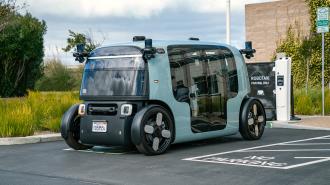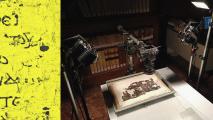Zoox deploys first-of-their-kind robotaxis in California
Autonomous vehicle developer Zoox is now transporting passengers on open public roads — bringing its robotaxis one step closer to commercial deployment.
What’s new? On February 12, Zoox — an Amazon subsidiary — announced that it had received a permit from the California Department of Motor Vehicles to operate its autonomous robotaxis on public roads between its two main office buildings in Foster City, California.
Over this one mile stretch of streets, the driverless vehicles can travel at speed up to 35 miles per hour and either empty or with up to four Zoox employees on board.
“Putting the vehicle on [an] open public road … is a big step.”
Aicha Evans
Design milestone: Zoox isn’t the first company to transport passengers in driverless vehicles on public roads — Waymo began doing so in 2020, and Cruise followed suit in 2022 — but previous robotaxis have been standard cars retrofitted with autonomous features.
Zoox is the first company to hit the milestone in a vehicle purpose-built for autonomy — instead of a steering wheel and pedals, the interior of a Zoox features two bench seats that face one another, and passengers enter and exit through a sliding door on the side of the boxy vehicle.
The National Highway Traffic Safety Administration (NHTSA) only dropped the requirement for manual controls in new vehicles in March 2022, and Zoox is the first company to deploy a vehicle that takes advantage of this design flexibility.
“The only reason cars aren’t symmetrical today is you have to drive them in one direction,” co-founder Jesse Levinson told Freethink in 2021. “Why not just make the vehicles symmetrical and bidirectional?”
“For example, you don’t have to do three-point or five-point turns, and you can avoid a lot of U-turns,” he continued. “If you pick someone up in their driveway [in a Zoox], you can just flip the lights and drive the other way. It makes routing easier and more efficient.”
Looking ahead: While Zoox is currently strictly limited in who can ride in its robotaxis and where, it sees the deployment as a major milestone along the path to its ultimate destination: a commercial service.
“Putting the vehicle on [an] open public road and validating our approach to all of the different requirements, including regulatory, is a big step, and we would not have done it unless internally we were already looking at the line of sight for going commercial,” said CEO Aicha Evans.
We’d love to hear from you! If you have a comment about this article or if you have a tip for a future Freethink story, please email us at [email protected].





